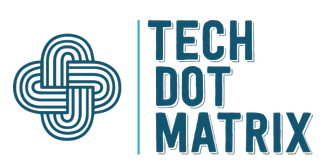
One of the earliest techniques used in software development is the Waterfall system development process. It follows an organized or linear approach and is broken up into stages. The method is one of the simplest to utilize because it is so apparent. The Waterfall system development approach is one of the most often asked questions.
In this blog, we will make the Waterfall software development process concept clear to you. We will cover everything from its definition to phases and more. So, let’s dive in.
What is the Waterfall system development process crucial?
The Waterfall system development process, despite its age, still holds relevance. It is crucial for several reasons:
- Structured approach
The Waterfall methodology delivers a precise and well-defined process from conception to implementation. Each step has specific goals and results because of its well-organized technique. It thus makes it straightforward for teams to understand what is expected at each stage of development.
- Comprehensive planning
The Waterfall approach necessitates extensive documentation and planning. This comprehensive planning helps to clarify the project’s requirements and objectives. Additionally, the Waterfall technique may produce a more predictable process when demands are clearly stated.
- Clear milestones
The sequential structure of a Waterfall enables the creation of distinct milestones. These achievements give us a sense of advancement. Additionally, it makes it simple for stakeholders to follow the project’s development. Thus, it guarantees that development is quantifiable and responsible.
- Reduced ambiguity
The focus on thorough documentation reduces uncertainty in the Waterfall system development process. Having precise requirements minimizes the possibility of misunderstandings. Furthermore, in large-scale initiatives, this clarity is essential.
- Resource optimization
Waterfall optimizes resource use. Each phase has distinct goals, enabling more effective deployment of resources. For example, designers can concentrate on design without being distracted by coding responsibilities.
- Quality focus
The Waterfall process strongly focuses on testing and validation, ensuring a comprehensive review of the final result. End-of-cycle testing that is rigorous can result in outcomes that are of better quality.
- Historical significance and legacy systems
Frequent use of the Waterfall methodology created efficient software applications and legacy systems. To upgrade and maintain these systems, it is crucial to comprehend Waterfall. As a result, it becomes essential to preserve the technological foundation of several organizations.
This raises an important question: when is the Waterfall system development process the best method to go for? Let’s take a look.
Who are the actual users of the Waterfall system approach?
The Waterfall software development process is typically used in projects with well-understood requirements. So here are some scenarios and types of organizations that commonly use the Waterfall model:
- Government projects
Government initiatives sometimes include stringent guidelines and much paperwork. When documentation is needed before the project’s start, the Waterfall technique is frequently employed in government contracts.
- Large enterprises
Big organizations with established procedures frequently use the Waterfall paradigm for large-scale projects. These businesses often have hierarchical structures. This structure fits very nicely with the Waterfall development methodology’s sequential nature.
- Regulated industries
Highly regulated sectors like banking and healthcare frequently use the Waterfall system development process. To verify compliance, regulatory organizations want detailed paperwork. It thus makes Waterfall a desirable option.
- Fixed-price contracts
In fixed-price contracts, clients frequently employ the Waterfall model when they have well-stated project scopes. Additionally, it gives the development team and the client a clear framework.
Now that we understand the need and when to use it, let us know the process you need to adopt.
What does the Waterfall system development process entail?
A sequential software development process is the Waterfall paradigm. Each phase must be completed before the next one begins, with little to no overlap. So here is an overview of the Waterfall system development process, broken down into its key stages:
- Requirements gathering and analysis
During this first stage, stakeholders provide project needs. Project teams thoroughly document these standards, encompassing both functional and non-functional details. They often formalize these requirements into a document called a requirements specification.
- System design
Designers begin system design once they have well-grasped the requirements, creating the system’s architecture. They outline how the parts will work together and guarantee that the system complies with the specifications. This step, therefore, results in system design specification papers.
- Implementation (Coding)
During the implementation phase, programmers construct the system based on the design specifications. They create the actual program or application by writing code. Additionally, this phase focuses primarily on coding and may involve leveraging various technologies and computer languages.
- Testing
The produced software is rigorously tested throughout the testing process. Testers ensure the system operates as intended and complies with all criteria. Unit testing, integration testing, system testing, and user acceptability testing are other types of testing that may be done.
- Deployment
After passing all tests, the team deploys the program to the production environment. Users can then utilize the system, putting it into operation.
- Maintenance and support
The system moves into the maintenance phase after deployment. This includes making any required changes and enhancements. As a result, it fixes problems that consumers have mentioned and offers continuing assistance.
The Waterfall system development process is not just a smooth road. You might face some challenges as well. But what are they exactly? Let’s look at that.
What are the challenges of Waterfall system development?
The Waterfall system development process, while structured, has several challenges. These challenges can impact the success of a project:
- Rigidity and inflexibility
The Waterfall development process is pretty rigid. It might be difficult to make modifications once a phase is finished without going through a lengthy revision process. Requirements frequently change in surroundings that change. The rigidity of the Waterfall might result in inconsistent final results.
- Limited adaptability to changes
It is challenging in Waterfall to adjust to shifting conditions, technologies, or market needs. Projects could become outdated or fail to meet market demands by the time they finish. It results in resource waste as a result. With the aid of a software development service, you can handle all of these difficulties.
- Late detection of issues
Following development is a unique process called testing. It’s possible that problems and flaws won’t be found until this stage. Furthermore, finding issues too late in the process might result in many rework, delays, and higher expenses.
- Difficulty in managing large projects
Due to its linear character, the Waterfall system development process may be challenging to manage for large projects with complicated needs. As the project grows, managing copious documentation becomes more difficult.
- Dependence on initial requirements
Accurate initial requirements are crucial for the Waterfall. The entire project may be jeopardized if these are misinterpreted or left unfinished. Incomplete or unclear criteria may sometimes result in a finished product that falls short of the client’s expectations. It thus leads to unhappiness and even project failure.
To sum up
With its structured and sequential approach, the Waterfall system development process offers a clear roadmap for software projects with stable, well-defined requirements. It provides a systematic approach to managing big projects because of its emphasis on extensive documentation and discrete phases. Nevertheless, its rigidity makes it difficult to adjust to shifting needs and market demands.
Finally, ending up here, our blog can serve as a solution for these difficulties. So adhere to our advice and start using the technique right now!
You might also like our TUTEZONE section which contains exclusive tutorials on how you can make your life simpler using technology.




